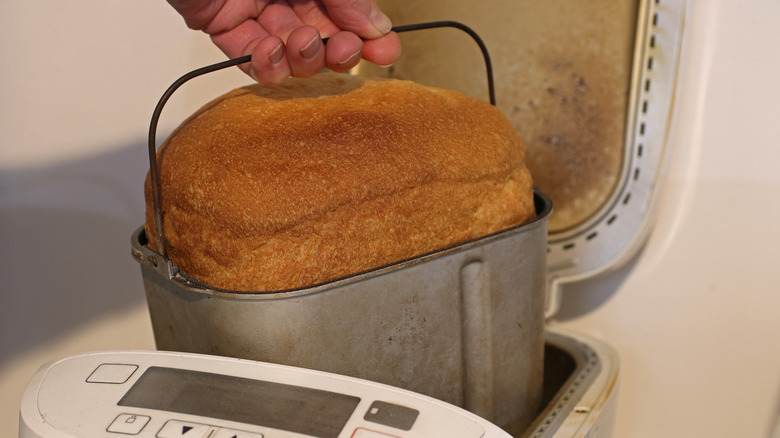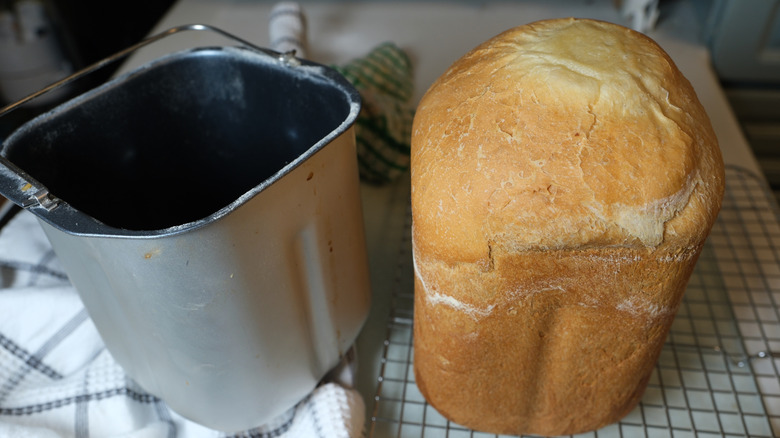Bread Makers Are Convenient But Have Some Major Downsides
Bread makers were the hottest kitchen appliances of the '90s, kind of like air fryers or Instant Pots are today. While we've yet to see whether the latter two will stand the test of time, bread machines fell out of favor once everybody got sick of eating the same old dome-topped loaves. Sales of this appliance started to tick up again in the late 20-teens, however, and they positively surged during the pandemic when bread making was all the rage. Since not everyone has the skills for sourdough (nor is everyone a fan of sourdough's uniquely different taste), some aspiring bakers kept things simple by sticking to the types of breads that are perfect for beginners (quick breads and flatbreads), while others sought mechanical intervention. The latter group may have experienced mixed results, however. According to Nicole Bean, whose family owns and operates a Houston-area mini-chain called Pizaro's Pizza Napoletana, "There are some downsides to using a bread machine."
For Bean, "The biggest one is not being able to actually touch and feel the dough to know how the texture is." Bread made in a bread machine can also be too dense, particularly if you have your machine set for a different type of bread than your current recipe, or you're using a recipe that's sized to make a loaf that's too small for the machine's capacity. Bread machines also occupy a considerable amount of countertop space, and they can be a pain to clean — two of the main reasons I stopped using mine.
The bread machine determines the loaf shape
Bread machines have some additional limitations that may or may not be downsides, depending on what you're expecting out of your loaf. For one thing, Nicole Bean noted, "The shape of loaf from machine to machine can often vary, but typically you'll find rectangle or oval options. Machines are specifically designed for these forms." (This is different from the bread machines I knew in the '90s, all of which produced loaves shaped like extra-tall muffins.) As she also pointed out, "There's slight variations in the crust being baked in an oven versus a bread machine. This all boils down to your bread machine settings versus your oven settings."
Bread machines also knead the dough differently than human hands do (no surprise there). "Machines can often put more heat into the mix, while [kneading] by hand can reduce the amount of friction causing the dough to heat," Bean explained. This can actually be an upside, however, since she went on to say, "Ideally, bread machines are shortcuts, so the kneading inside the machine can be beneficial to reducing the proof time." Don't mind a streamlined loaf shape? A bread maker might be a convenience you truly "knead."

